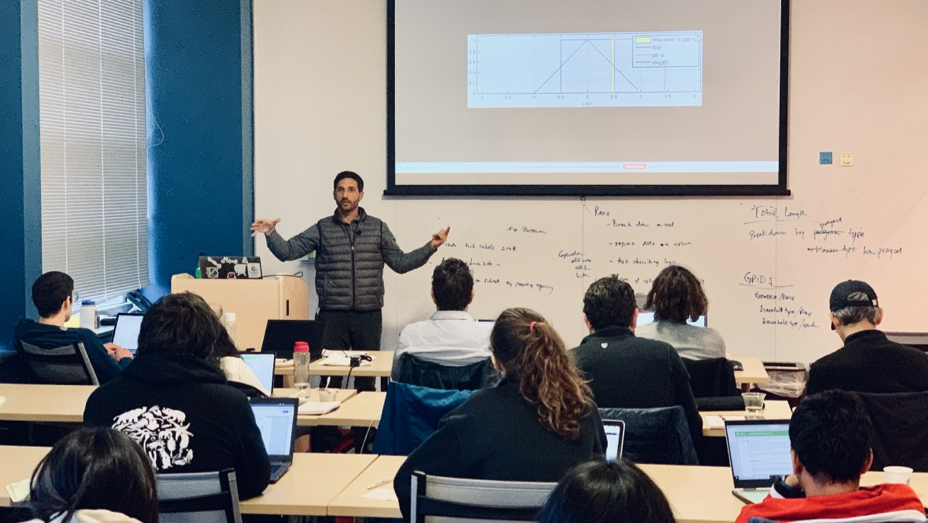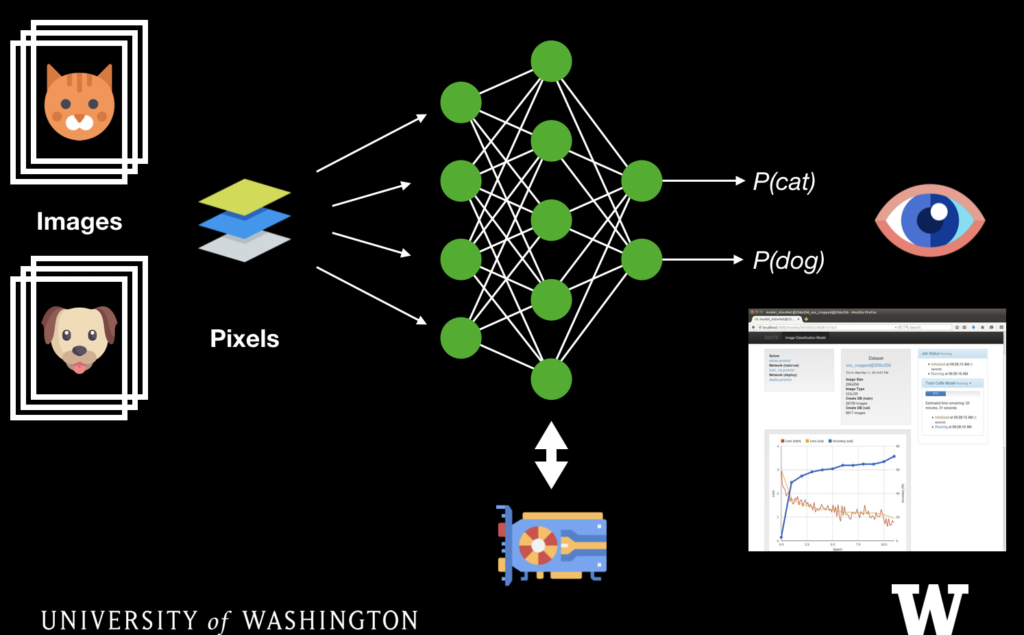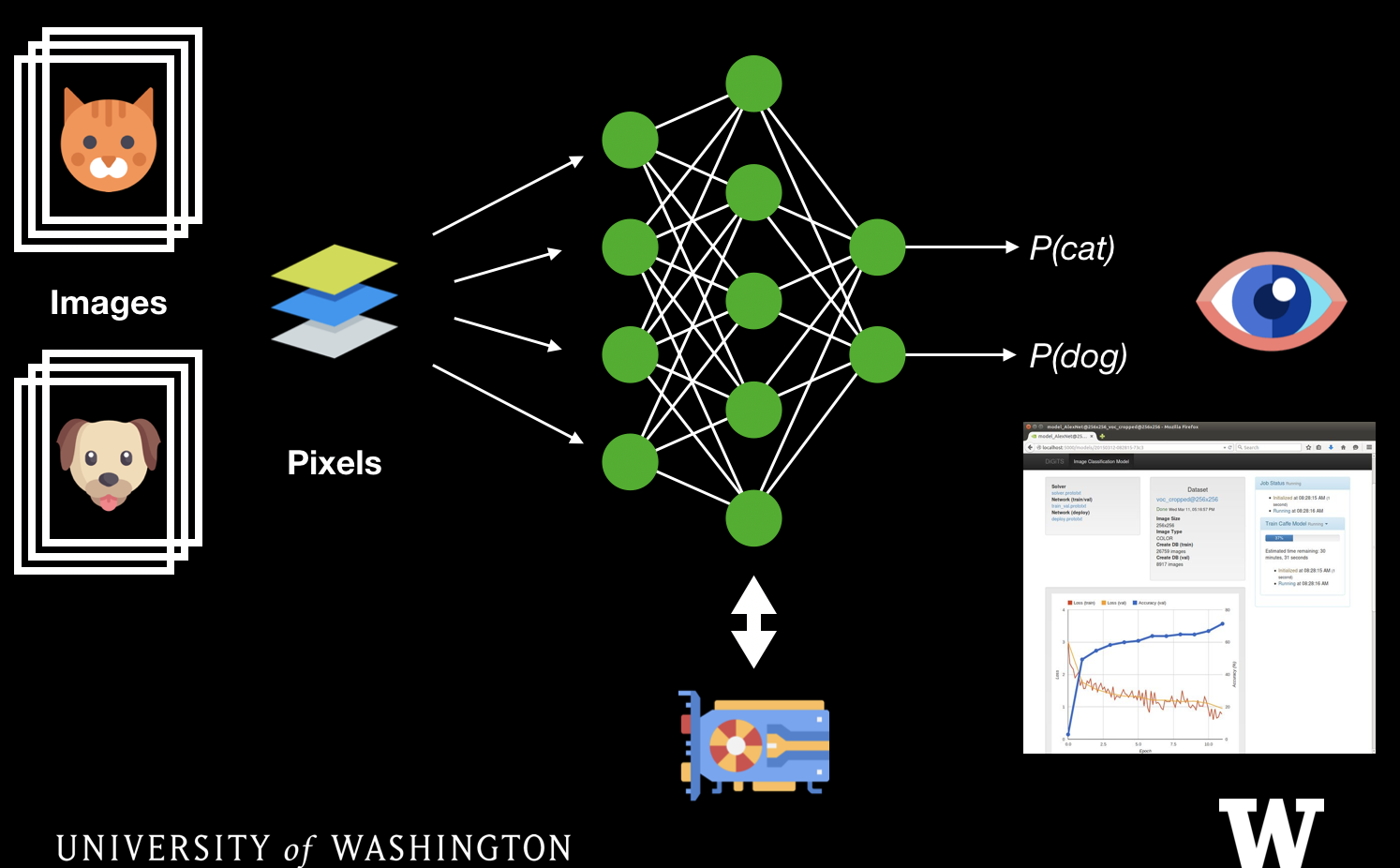
February 28, 2019
On Feb. 22 the UW Research Computing team hosted a Deep Learning Institute (DLI) on using machine learning for computer vision at the eScience Institute. The DLI was attended by a diverse set of participants ranging from students at the undergraduate level through full professors from departments within engineering, business, and medicine.
DLI attendees learned the basics of machine learning theory and got hands-on experience tuning hyperparameters for feature selection, generating training curves, and running inference from their final models. All the attendees had plans to use what they learned immediately in their own research projects. Examples of research projects include improving medical imaging to detect rare conditions to training models to identify endangered species not readily distinguishable from related non-endangered species for customs screening.

The DLI was organized by UW Research Computing Directors Nam Pho and Rob Fatland with generous support from industry partners NVIDIA, Dell, and Google. NVIDIA was represented by Abe Stern and Jon Saposhnik who led course instruction and content. The Dell team of Bill Koehler, Josh Jaeger, and Simon Park provided laptops for attendees and was on hand to speak about machine learning hardware for personal computing and research workstations. They also graciously provided lunch for the occasion.
Dell solutions architect, Josh Jaeger (UW Foster School ‘12), used the event as an opportunity to unveil the latest high-memory, double-precision graphics processing unit (GPU) nodes developed in partnership with the UW for Hyak, the university’s supercomputer. Google contributed cloud credits for workshop participants to further explore what they learned using the Google Cloud Platform. The eScience Institute provided a closing reception for the attendees.
“The groundswell of support and diverse participation from units across our campus shows the continuing demand for training in cutting-edge machine learning methods. I’m thrilled that Nam was able to facilitate this workshop and look forward to many more in the future,” said Jim Pfaendtner, the associate vice provost for research computing and Chemical Engineering Department chair.
Additionally, as a result of attending the DLI, two faculty members are now eScience affiliates; welcome Sara Billey and Savannah Partridge!
The organizers wish to thank everyone for a great event!

